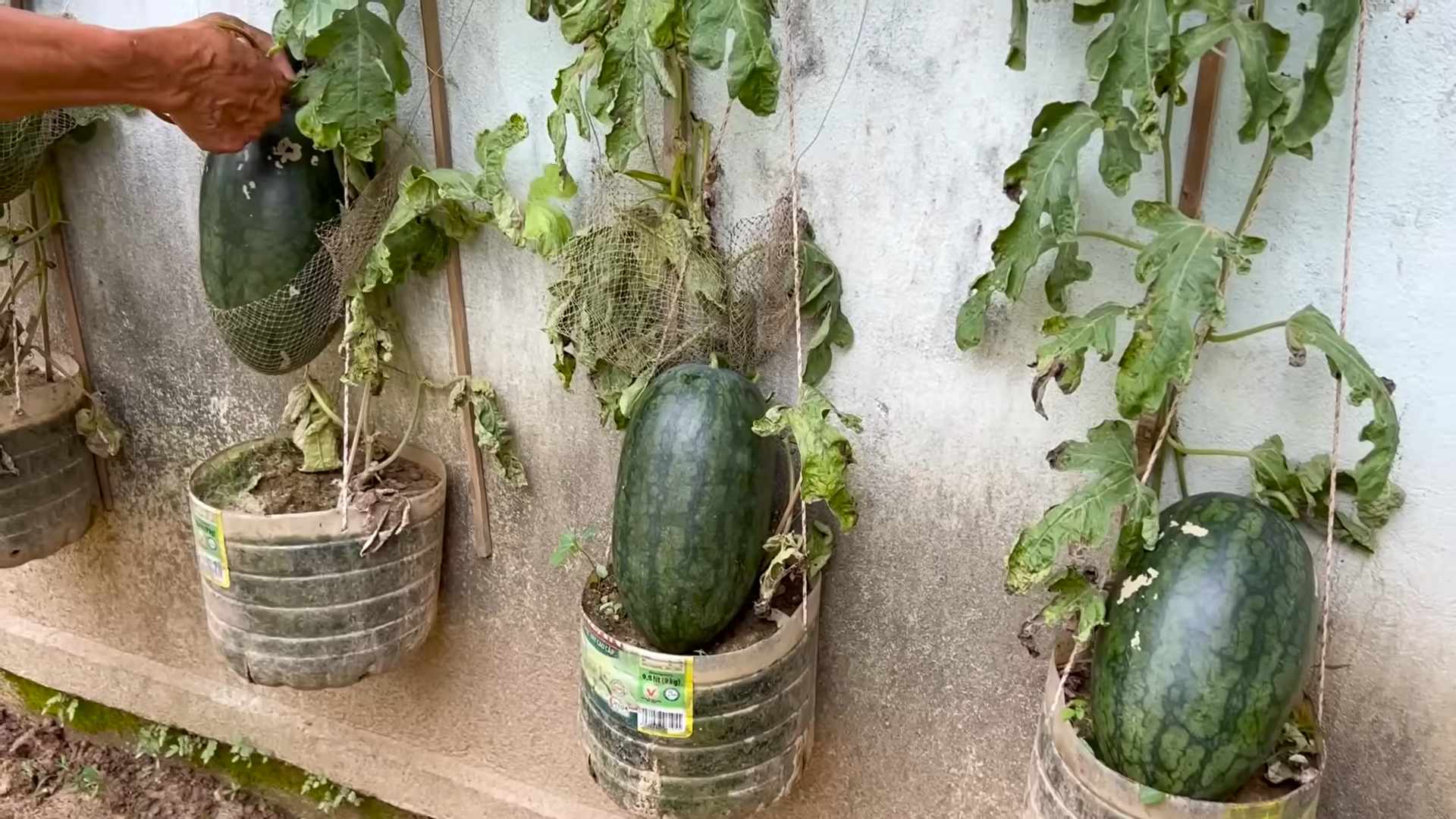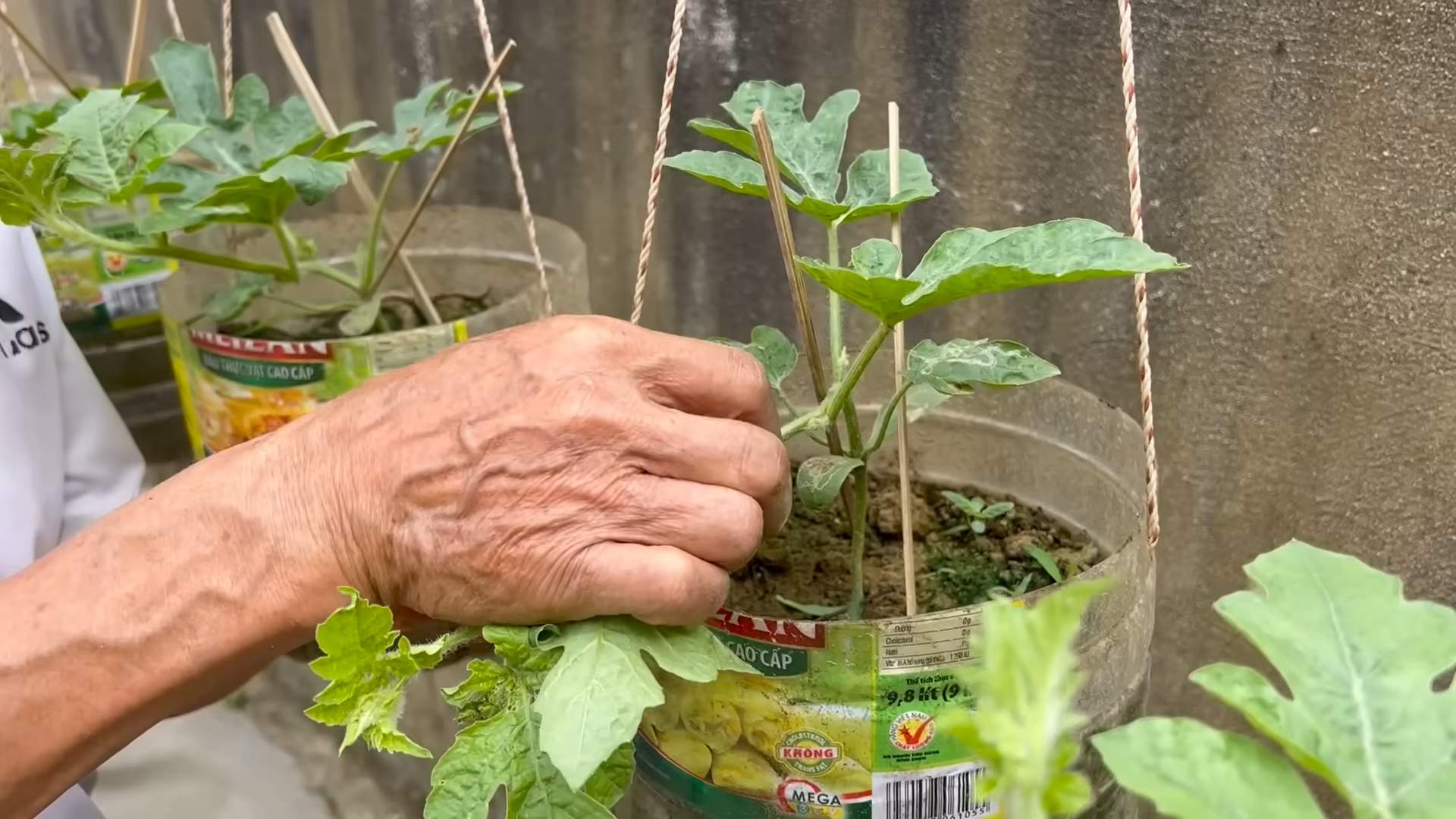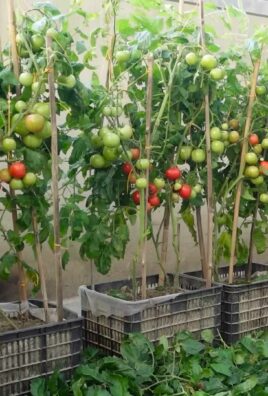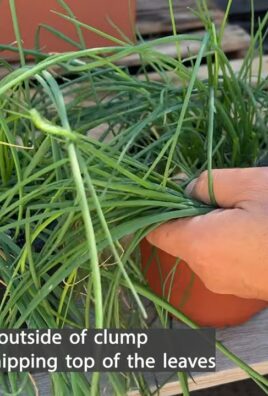Grow Watermelon Tips and Tricks: Unleash Your Inner Gardener!
Have you ever dreamed of biting into a juicy, homegrown watermelon on a hot summer day? I know I have! There’s just something incredibly satisfying about nurturing a tiny seed into a sprawling vine that yields such a delicious reward. But let’s be honest, growing watermelons can feel a little intimidating. They’re big, they’re thirsty, and they seem to demand a lot of space. But fear not, fellow gardening enthusiasts! This article is packed with easy-to-follow grow watermelon tips and tricks that will transform your backyard into a watermelon wonderland, even if you’re a beginner.
Watermelons have a rich history, dating back thousands of years to Africa. They were even found in King Tut’s tomb! Over time, they’ve become a symbol of summer celebrations and a refreshing treat enjoyed worldwide. But beyond their deliciousness, growing your own watermelons offers so much more. It’s a fantastic way to connect with nature, reduce your carbon footprint, and enjoy the unparalleled flavor of freshly picked produce. Plus, you’ll know exactly what went into growing your watermelon, avoiding any unwanted chemicals or pesticides.
Many people struggle with growing watermelons because they don’t realize the specific needs of these sun-loving fruits. From choosing the right variety for your climate to providing adequate water and nutrients, there are a few key secrets to success. That’s why I’ve compiled this comprehensive guide, filled with practical grow watermelon tips and tricks that will help you overcome common challenges and achieve a bountiful harvest. Get ready to impress your friends and family with your watermelon-growing prowess!

Growing Watermelons: My Foolproof Guide to Juicy Success!
Okay, watermelon lovers, gather ’round! I’m about to share all my secrets for growing the most delicious, juicy watermelons you’ve ever tasted. Forget those bland, store-bought melons – we’re talking homegrown goodness that will blow your mind. This isn’t just a quick guide; it’s a deep dive into everything you need to know, from seed to sweet, sweet harvest.
Choosing the Right Watermelon Variety
Before we even think about planting, let’s talk varieties. Not all watermelons are created equal, and choosing the right one for your climate and space is crucial.
* Consider your climate: Short growing season? Opt for faster-maturing varieties like ‘Sugar Baby’ or ‘Bush Sugar Baby’. Longer, hotter summers? You can experiment with larger varieties like ‘Charleston Gray’ or ‘Crimson Sweet’.
* Think about space: Watermelons are vines, and some can get HUGE. If you’re short on space, bush varieties are your best bet. They produce smaller vines but still give you delicious melons.
* Flavor preferences: Do you prefer super sweet, slightly tangy, or something in between? Research different varieties to find one that suits your taste buds. I personally love ‘Blacktail Mountain’ for its early maturity and incredible sweetness.
* Seedless vs. Seeded: Seedless watermelons are convenient, but they can be a bit trickier to grow. They require a pollinator variety nearby to set fruit. Seeded varieties are generally easier for beginners.
Getting Started: Planting Your Watermelon Seeds
Now for the fun part! You have two options here: starting seeds indoors or direct sowing. I usually start mine indoors to get a head start, especially since my growing season isn’t super long.
Starting Seeds Indoors (My Preferred Method)
This gives you a jumpstart on the season and protects your seedlings from early-season pests and diseases.
1. Timing is key: Start your seeds about 4-6 weeks before the last expected frost. I usually aim for mid-April.
2. Choose your containers: Use peat pots or biodegradable containers. Watermelon roots are sensitive to transplanting, so these will minimize disturbance.
3. Use a good seed-starting mix: Don’t use garden soil! It’s too heavy and can harbor diseases. A light, airy seed-starting mix is perfect.
4. Planting the seeds: Plant 2-3 seeds per pot, about ½ inch deep.
5. Water gently: Keep the soil consistently moist, but not soggy. I use a spray bottle to avoid disturbing the seeds.
6. Provide warmth: Watermelon seeds need warmth to germinate. A heat mat can be a lifesaver, or you can place the pots in a warm spot in your house.
7. Provide light: Once the seedlings emerge, they need plenty of light. A grow light is ideal, but a sunny windowsill can work too. Just make sure they get at least 6 hours of direct sunlight.
8. Thinning: Once the seedlings have a few true leaves, thin them to one strong seedling per pot. Snip off the weaker seedlings at the soil line – don’t pull them out, as this can disturb the roots of the remaining seedling.
9. Harden off: Before transplanting your seedlings outdoors, you need to harden them off. This means gradually exposing them to outdoor conditions over a period of 7-10 days. Start by placing them in a sheltered spot for a few hours each day, gradually increasing the amount of time they spend outside.
Direct Sowing Watermelon Seeds
If you live in a warm climate with a long growing season, you can direct sow your watermelon seeds directly into the garden.
1. Wait for warm soil: Watermelon seeds need warm soil to germinate. Wait until the soil temperature is consistently above 70°F (21°C).
2. Prepare the soil: Amend the soil with plenty of compost or well-rotted manure. Watermelons are heavy feeders and need nutrient-rich soil.
3. Planting the seeds: Plant the seeds about 1 inch deep, spacing them according to the variety you’re growing. Check the seed packet for specific spacing recommendations.
4. Water gently: Keep the soil consistently moist until the seeds germinate.
5. Thinning: Once the seedlings emerge, thin them to the strongest plant per hill.
Preparing the Garden Bed: Location, Location, Location!
Watermelons need a sunny spot with well-drained soil. They also need plenty of space to sprawl.
1. Choose a sunny location: Watermelons need at least 6-8 hours of direct sunlight per day.
2. Well-drained soil is a must: Watermelons hate wet feet. If your soil is heavy clay, amend it with plenty of compost or sand to improve drainage.
3. Amend the soil: Watermelons are heavy feeders, so amend the soil with plenty of compost or well-rotted manure. I also like to add a slow-release fertilizer.
4. Consider raised beds: Raised beds are a great option if you have poor soil drainage or limited space.
5. Spacing: Give your watermelons plenty of space to sprawl. Bush varieties need about 3-4 feet between plants, while larger varieties need 6-8 feet.
Transplanting Your Watermelon Seedlings
If you started your seeds indoors, it’s time to transplant them into the garden!
1. Wait for warm weather: Make sure all danger of frost has passed and the soil has warmed up.
2. Prepare the planting holes: Dig holes that are slightly larger than the peat pots or biodegradable containers.
3. Gently remove the seedlings: If you used peat pots, you can plant the entire pot directly into the ground. If you used biodegradable containers, gently remove the seedlings from the containers, being careful not to disturb the roots.
4. Plant the seedlings: Place the seedlings in the holes and backfill with soil.
5. Water thoroughly: Water the seedlings well after planting.
6. Mulch: Mulch around the plants with straw or hay to help retain moisture and suppress weeds. Black plastic mulch can also be used to warm the soil and promote faster growth.
Watering and Fertilizing: Keeping Your Watermelons Happy
Watermelons need consistent watering, especially during hot, dry weather. They also need regular fertilization to produce those big, juicy melons.
1. Water deeply and regularly: Watermelons need about 1-2 inches of water per week. Water deeply and regularly, especially during hot, dry weather. Avoid overhead watering, as this can promote fungal diseases. Soaker hoses or drip irrigation are ideal.
2. Fertilize regularly: Watermelons are heavy feeders and need regular fertilization. Use a balanced fertilizer (10-10-10) every 2-3 weeks. You can also use a fertilizer specifically formulated for melons.
3. Side-dress with compost: In addition to regular fertilization, side-dress your watermelons with compost every few weeks. This will provide them with a steady supply of nutrients.
4. Reduce watering as the fruit ripens: Once the watermelons start to ripen, reduce watering to prevent them from splitting.
Pest and Disease Control: Protecting Your Precious Melons
Watermelons are susceptible to a variety of pests and diseases. Here’s how to protect your precious melons:
* Common Pests:
* Squash bugs: These pests can suck the sap from your watermelon plants, causing them to wilt and die. Handpick them off the plants or use an insecticidal soap.
* Cucumber beetles: These beetles can transmit diseases and damage the leaves and fruit. Use row covers to protect your plants or spray with an insecticide.
* Aphids: These tiny pests can suck the sap from your watermelon plants, causing them to become weak and stunted. Spray them off with a strong stream of water or use an insecticidal soap.
* Common Diseases:
* Powdery mildew: This fungal disease can cause a white, powdery coating on the leaves. Improve air circulation and spray with a fungicide.
* Anthracnose: This fungal disease can cause dark, sunken spots on the leaves and fruit. Avoid overhead watering and spray with a fungicide.
* Fusarium wilt: This soilborne disease can cause the plants to wilt and die. Plant resistant varieties and practice crop rotation.
* Prevention is key: The best way to control pests and diseases is to prevent them from occurring in the first place. Choose disease-resistant varieties, practice crop rotation, and keep your garden clean and free of debris.
Pollination: Ensuring a Bountiful Harvest
Watermelons need to be pollinated

Conclusion
So, there you have it! Mastering the art of growing watermelons doesn’t require a green thumb blessed by the gardening gods. It’s about understanding the plant’s needs, providing the right environment, and employing a few clever DIY tricks to boost your chances of a juicy, sweet harvest. We’ve explored everything from seed starting and soil preparation to pollination and pest control, all with the goal of empowering you to cultivate your own watermelon patch, regardless of your experience level.
The DIY tricks we’ve discussed, like using black plastic mulch to warm the soil, creating mini-greenhouses from plastic bottles for early starts, and employing companion planting strategies, are not just whimsical ideas; they are practical, cost-effective methods that can significantly impact your watermelon yield and quality. These techniques address specific challenges that watermelon growers often face, such as cool soil temperatures, short growing seasons, and pest infestations. By implementing these strategies, you’re essentially giving your watermelons a head start and a fighting chance against environmental stressors.
But the beauty of gardening lies in its adaptability and the endless possibilities for experimentation. Feel free to tweak these DIY tricks to suit your specific climate, soil conditions, and available resources. For instance, if you live in a particularly hot climate, consider using shade cloth instead of black plastic mulch to prevent the soil from overheating. Or, if you’re struggling with vine borers, try wrapping the base of your watermelon stems with aluminum foil to deter them. You could even experiment with different companion plants to see which ones work best in your garden. Marigolds are a popular choice for repelling nematodes, but basil and nasturtiums can also be effective against various pests.
Remember, growing watermelons is a journey, not a destination. There will be successes and setbacks along the way, but each experience will teach you something new about these fascinating fruits and the art of gardening. Don’t be afraid to get your hands dirty, embrace the challenges, and most importantly, have fun!
We wholeheartedly encourage you to try these grow watermelon tips and tricks in your own garden. Whether you’re a seasoned gardener or a complete novice, we believe that you can successfully grow delicious, homegrown watermelons with a little bit of knowledge and effort. And once you’ve harvested your first watermelon, be sure to share your experience with us! We’d love to hear about your successes, your challenges, and any variations you’ve tried. Share your photos, your tips, and your stories in the comments section below. Let’s create a community of watermelon growers who are passionate about sharing their knowledge and helping each other succeed.
Growing your own watermelons is not just about the fruit; it’s about the connection to nature, the satisfaction of nurturing a plant from seed to harvest, and the joy of sharing your bounty with friends and family. So, go ahead, give it a try! You might just surprise yourself with what you can achieve. Happy gardening!
Frequently Asked Questions (FAQ)
Q: How long does it take to grow a watermelon?
A: The time it takes to grow a watermelon from seed to harvest varies depending on the variety and growing conditions. Generally, it takes between 70 and 90 days for most watermelon varieties to mature. Some smaller, early-maturing varieties may be ready in as little as 65 days, while larger, late-maturing varieties can take up to 100 days or more. Factors such as temperature, sunlight, and soil fertility can also influence the growth rate.
Q: What is the best soil for growing watermelons?
A: Watermelons thrive in well-drained, sandy loam soil that is rich in organic matter. The ideal soil pH is between 6.0 and 6.8. Before planting, amend your soil with compost, aged manure, or other organic materials to improve its fertility and drainage. Avoid heavy clay soils, as they can become waterlogged and hinder root growth. If you have clay soil, consider growing your watermelons in raised beds or containers.
Q: How much sunlight do watermelons need?
A: Watermelons require at least 6-8 hours of direct sunlight per day to thrive. Choose a planting location that receives full sun throughout the day. Insufficient sunlight can lead to stunted growth, poor fruit development, and reduced sweetness.
Q: How often should I water my watermelons?
A: Watermelons need consistent moisture, especially during fruit development. Water deeply and regularly, aiming to keep the soil consistently moist but not waterlogged. During hot, dry weather, you may need to water daily. Reduce watering as the fruits begin to ripen to prevent them from splitting. A good rule of thumb is to water when the top inch of soil feels dry to the touch.
Q: How do I know when my watermelon is ripe?
A: There are several indicators that can help you determine when your watermelon is ripe. One common method is to check the tendril closest to the fruit stem. When this tendril turns brown and dries out, it’s a good sign that the watermelon is ripe. Another indicator is the ground spot, the area where the watermelon rests on the ground. When the ground spot turns from white to a creamy yellow color, it’s usually ripe. You can also thump the watermelon; a ripe watermelon will sound hollow and deep. Finally, the skin of a ripe watermelon will be dull and slightly waxy, rather than shiny and smooth.
Q: What are some common pests and diseases that affect watermelons?
A: Watermelons are susceptible to various pests and diseases, including aphids, squash bugs, vine borers, cucumber beetles, powdery mildew, and fusarium wilt. To prevent pest and disease problems, practice good garden hygiene, such as removing weeds and debris, and rotate your crops regularly. You can also use organic pest control methods, such as insecticidal soap or neem oil, to control pests. For diseases, choose disease-resistant varieties and ensure good air circulation around your plants.
Q: Can I grow watermelons in containers?
A: Yes, you can grow watermelons in containers, but you’ll need to choose a large container (at least 20 gallons) and a compact or bush-type watermelon variety. Make sure the container has good drainage and use a high-quality potting mix. Water container-grown watermelons regularly and fertilize them every two weeks with a balanced fertilizer. You may also need to provide support for the vines as they grow.
Q: What are some good companion plants for watermelons?
A: Companion planting can help improve watermelon growth and deter pests. Some good companion plants for watermelons include marigolds (to repel nematodes), basil (to repel aphids and whiteflies), nasturtiums (to attract beneficial insects), and radishes (to deter cucumber beetles). Avoid planting watermelons near potatoes or tomatoes, as they can compete for nutrients.
Q: How can I improve the sweetness of my watermelons?
A: Several factors can influence the sweetness of watermelons, including sunlight, water, and soil fertility. Make sure your watermelons receive plenty of sunlight and water them regularly, especially during fruit development. Fertilize them with a fertilizer that is high in potassium, which is essential for sugar production. Avoid over-watering as the fruits ripen, as this can dilute the sugars. Also, choose watermelon varieties that are known for their sweetness.




Leave a Comment